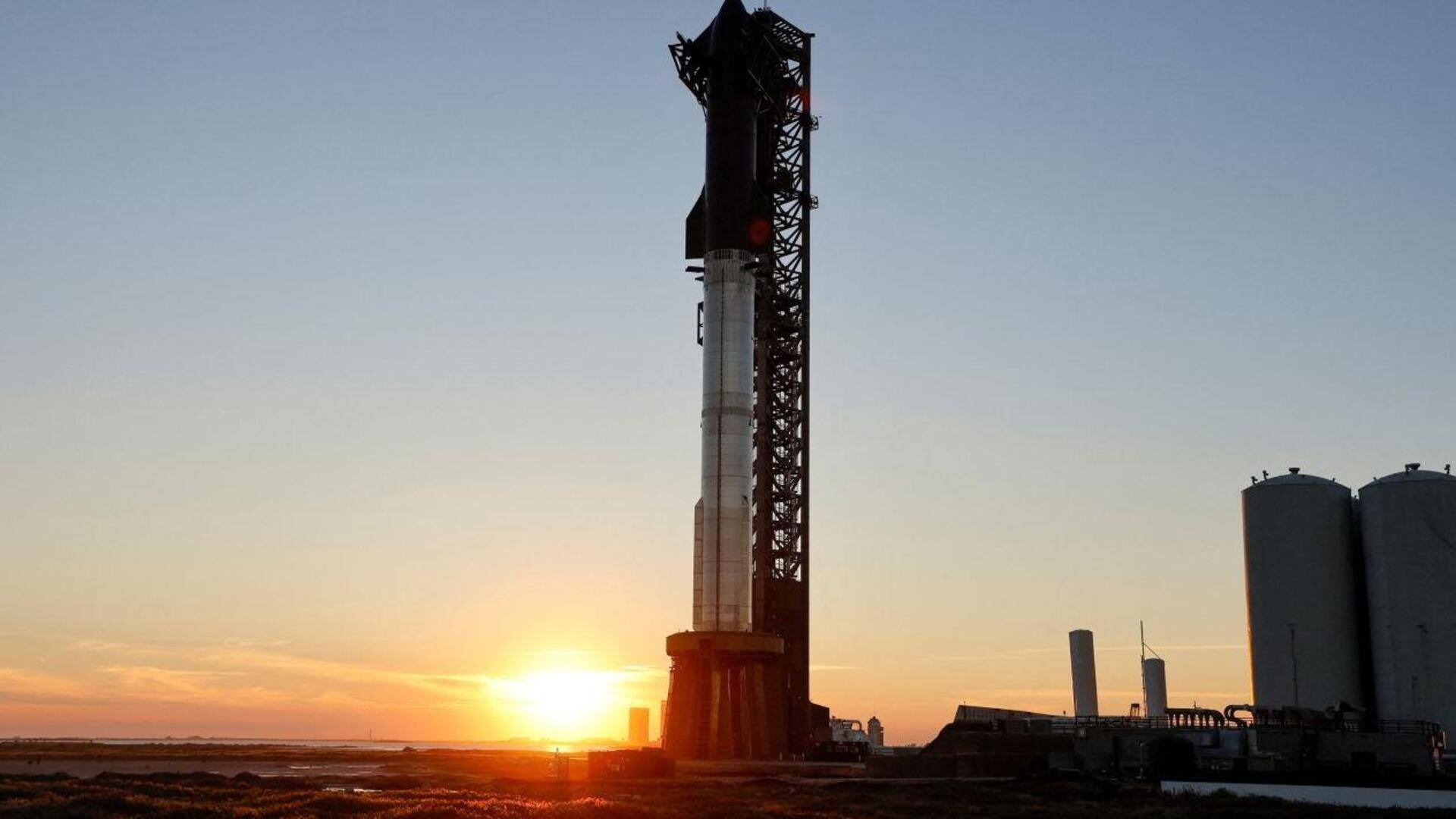
SpaceX postpones Starship test flight to Saturday: Know why
What's the story
SpaceX has postponed the second test flight of its colossal Starship rocket to November 18, to replace a component of the rocket. Initially planned for today, the announcement to delay the launch came from Elon Musk, SpaceX's founder and CEO. A "grid fin actuator" on Starship needed to be swapped out, said Musk. The liftoff is now scheduled to take place at SpaceX's Starbase facility in South Texas during a 20-minute window commencing at 8:00am EST (6:30pm IST).
Starship
SpaceX's Starship is the most powerful rocket in the world
Starship comprises two completely and rapidly reusable components: the Super Heavy first stage and a 165-foot-tall upper-stage spacecraft, also called Starship. When fully stacked, Starship towers nearly 400 feet, making it the largest and most powerful space vehicle ever constructed. The grid fins that are to be replaced are waffle-iron-like structures on Super Heavy, which help the booster steer its way back to Earth, per Space.com.
Details
What is the goal of the second test flight?
The objectives of Saturday's mission resemble those of the April 20 flight, which was the first time the fully stacked Starship took to the skies. The Super Heavy first stage is anticipated to make a water landing in the Gulf of Mexico roughly seven minutes post-liftoff. Concurrently, the Starship's upper stage will approach orbital speed while completing a partial loop around Earth before splashing down near Hawaii roughly 90 minutes after launch.
Insights
The first Starship test flight ended in an explosion
During Starship's maiden test flight on April 20, the upper stage failed to detach from the Super Heavy first stage and faced other issues. As a result, SpaceX intentionally destroyed the vehicle high above the Gulf of Mexico four minutes after liftoff. The Federal Aviation Authority (FAA), which issues launch licenses for such flights, mandated numerous fixes before a second attempt could be made. Anyhow, SpaceX deemed the initial test successful since their goal was to clear the launch tower.
Integrated flight
Tomorrow's launch will be an 'integrated test'
The upcoming launch, and the April flight, are what's called an "integrated test," meaning Starship and the Super Heavy will lift off as one vehicle. After launch, the booster stage separates, the same way that SpaceX's Falcon 9 rocket does. The booster will then perform a "boost back" where it flips and then makes its way to Earth. The booster will make a "water landing" in the Gulf of Mexico but will not be recovered, unlike the Falcon 9.
Facts
Starship can ferry people, cargo to Moon and Mars
Musk envisions Starship as the spacecraft that will eventually transport humans to Mars. In the short term, NASA is relying on the rocket for the Artemis 3 crewed mission to the Moon, which is planned for 2025. Notably, Artemis 3 will mark the first crewed lunar landing in over 50 years, since the Apollo mission. SpaceX will supply the Human Landing System (HLS), a variant of Starship, to carry astronauts from lunar orbit to the Moon's surface.